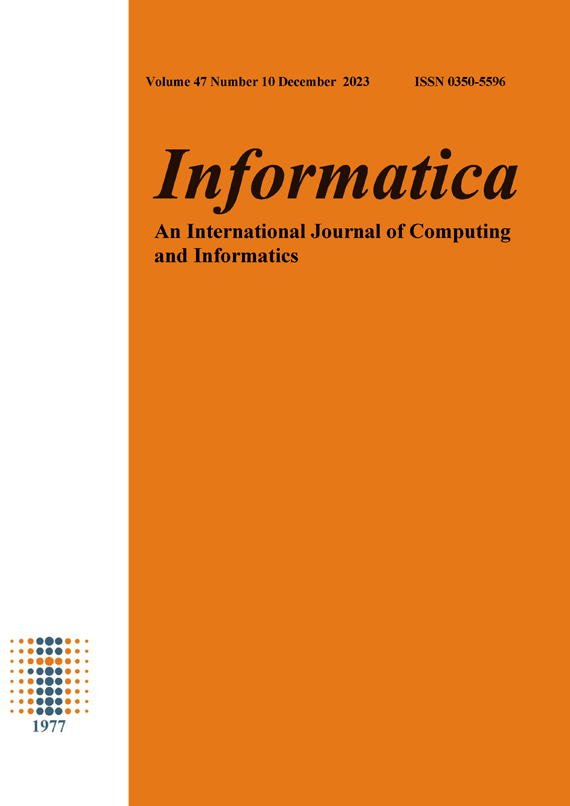Development of Dynamic Channel Coding Strategy for Multi-User MIMO-NOMA 5G Downlink Communication by Concatenation of Coding Method
DOI:
https://doi.org/10.31449/inf.v47i10.5219Abstract
The aim of this work is to develop a dynamic coding strategy for a Multi user MIMO NOMA 5G downlink communication by means of concatenation of coding methods. The ultimate motive behind 5G technology is to deliver data at a ultra-high speed of multi - Gbps rate with extremely low latency, being highly reliable, offering huge network capacity, readily available channels and a much stable user experience accommodating multiple simultaneous users. This in turn demands a highly flexible and an effective channel coding method as it helps out the communication to be almost error free by reducing the bit errors of the transmitted data by saving it from the channel noise and the available interference in the channel. This paper provides an efficient approach based on the concatenation of Polar codes that is suited for a multi user mimo NOMA system that meets the criteria of the 5G standard. To compare the performance of mimo NOMA systems with that of concatenated PDCCH (Physical Downlink Control CHannel) polar codes (Symbol Energy to Noise Ratio) versus BLER (BLock Error Rate) simulations have been performed. The results show that the suggested approach performs better in terms of Sum Rate Capacity versus SNR in multiuser mimo NOMA system.
References
Gilbert EN, “Capacity of a burst noise channel”, in Bell Syst. Tech.J., vol. 398, 1960;1253-1266.
Arikan E, “Channel polarization: A method for constructing capacity achieving codes for symmetric binary-input memoryless channels”, Information Theory, in IEEE Transactions, vol. 55, no. 7, 2009;3051–3073.
Arikan E Telatar E, “On the rate of channel polarization”, in ,IEEE International Symposium on Information Theory, 2009;1493–1495.
3GPP TS 38.212 Technical Specification Group Radio Access Network, NR, Multiplexing and Channel Coding, https://www.etsi.org 2017;RTS/TSGR-0138212vg20.
Niu K, Chen K, Lin J, Zhang QT, “Polar codes: Primary concepts and practical decoding algorithms”, in IEEE Communications magazine, vol. 52, no. 7, 2014;192–203.
Vangala H, Viterbo E, Hong Y, “A comparative study of polar code constructions for the AWGN channel”, 2015;arXiv:1501.02473.
Tal I, Vardy A, “How to construct polar codes,” in IEEE Transactions on Information Theory, vol. 59, no. 10, 2013;6562–6582.
Peter Trifonov, “Effificient Design and decoding of polar codes”, in IEEE Transactions on Communications, vol. 60, no. 11, 2012;3221–3227.
He G, Belfifiore JC, Land I, Yang G, Liu X, Chen Y, Li R, Wang J, Ge Y, Zhang R, Tong W, “Beta-expansion: a theoretical framework for fast and recursive construction of polar codes,” in IEEE Global Communications Conference (GLOBECOM), Singapore, 2017;978-1-5090-5019-2.
Condo C, Hashemi SA, Gross WJ, “Effificient bit-channel reliability computation for multi-mode polar code encoders and decoders”, in IEEE International Workshop on Signal Processing Systems (SiPS), 2017;2374-7390.
Afifisiadis O, Balatsoukas-Stimming A, Burg A, “A low-complexity improved successive cancellation decoder for polar codes”, in IEEE Asilomar Conference on Signals, Systems and Computers, 2014;1058-6393.
Tal I, Vardy A, “List decoding of polar codes”, in IEEE Transactions on Information Theory, vol. 61, no. 5, 2015;2213–2226.
B. Li, H. Shen, D. Tse, “An adaptive successive cancellation list decoder for polar codes with cyclic redundancy check”, in IEEE Communications Letters, vol. 16, no. 12, 2012;2044–2047.
Richardson T, Urbanke R, “Modern Coding Theory”, in Cambridge University Press; 2008.
Wang R, Liu R, “A novel puncturing scheme for polar codes”, in IEEE Communications Letters, vol. 18, no. 12, 2014;2081–2084.
Guo J, Qin M, Guillén i Fàbregas A, Siegel PH, “Enhanced Belief Propagation Decoding of Polar Codes through Concatenation”, in IEEE Inter. Symp. Inf. Theory (ISIT), 2014;2987–2991.
Downloads
Published
Issue
Section
License
I assign to Informatica, An International Journal of Computing and Informatics ("Journal") the copyright in the manuscript identified above and any additional material (figures, tables, illustrations, software or other information intended for publication) submitted as part of or as a supplement to the manuscript ("Paper") in all forms and media throughout the world, in all languages, for the full term of copyright, effective when and if the article is accepted for publication. This transfer includes the right to reproduce and/or to distribute the Paper to other journals or digital libraries in electronic and online forms and systems.
I understand that I retain the rights to use the pre-prints, off-prints, accepted manuscript and published journal Paper for personal use, scholarly purposes and internal institutional use.
In certain cases, I can ask for retaining the publishing rights of the Paper. The Journal can permit or deny the request for publishing rights, to which I fully agree.
I declare that the submitted Paper is original, has been written by the stated authors and has not been published elsewhere nor is currently being considered for publication by any other journal and will not be submitted for such review while under review by this Journal. The Paper contains no material that violates proprietary rights of any other person or entity. I have obtained written permission from copyright owners for any excerpts from copyrighted works that are included and have credited the sources in my article. I have informed the co-author(s) of the terms of this publishing agreement.
Copyright © Slovenian Society Informatika








